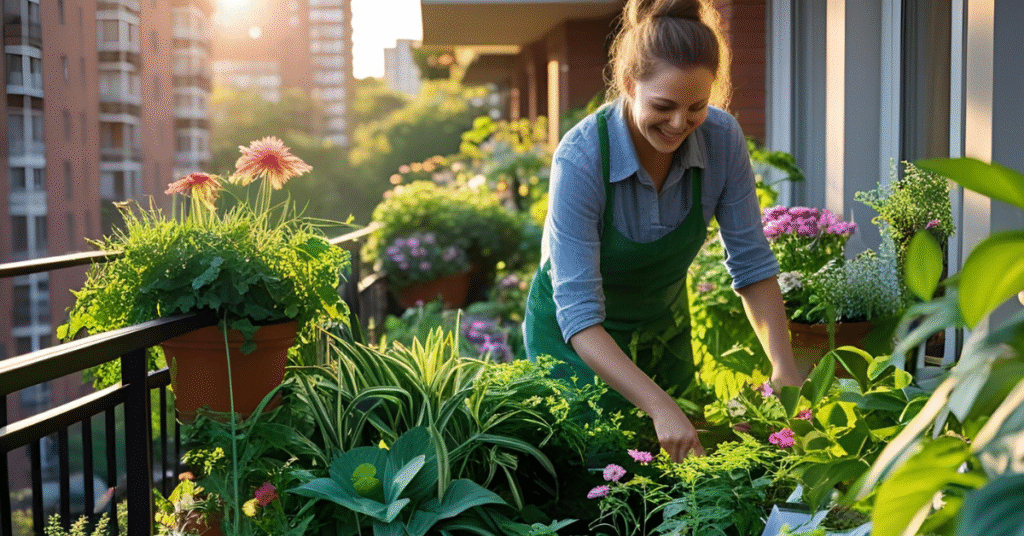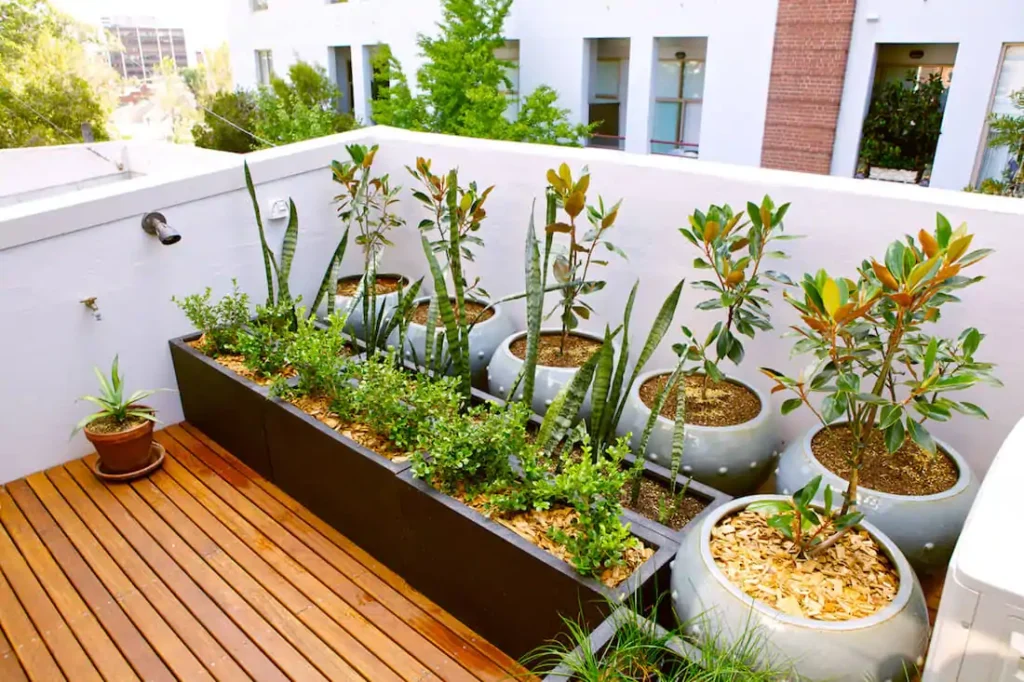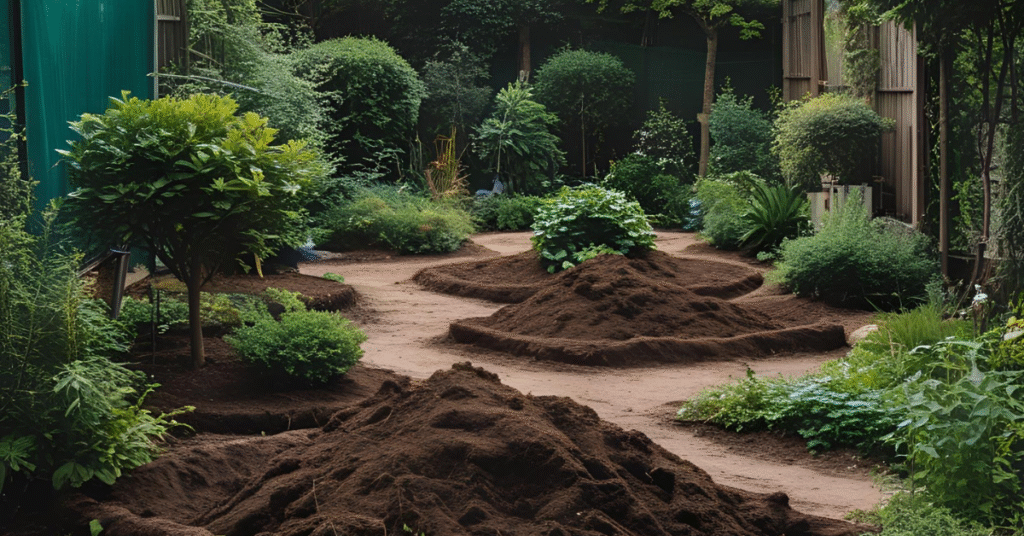Self watering planters are revolutionizing how we care for our plants, whether you’re growing herbs on your balcony or nurturing tomatoes in your garden. These innovative systems take the guesswork out of watering, ensuring your plants get exactly the right amount of moisture they need to thrive.
From sleek glass pots that complement modern home decor to hanging systems perfect for wall-mounted gardens, self watering planters offer solutions for every gardening challenge. Whether you’re a busy professional, frequent traveler, or simply want to give your plants the best care possible, these systems can transform your gardening experience.
Quick Facts About Self Watering Planters
- Reduce watering frequency by up to 75%
- Prevent both under and over-watering
- Ideal for herbs, vegetables, and houseplants
- Perfect for balcony and indoor gardening
What Are Self Watering Planters?
Self watering planters are innovative gardening containers that automatically deliver water to your plants through a built-in reservoir system. Unlike traditional pots that rely on top-down watering, these planters use capillary action or wicking systems to draw water from a reservoir directly to the plant roots as needed.
Key Components
- Water Reservoir: Hidden chamber that stores water
- Wicking System: Draws water up to plant roots
- Water Level Indicator: Shows when to refill
- Overflow Drain: Prevents waterlogging
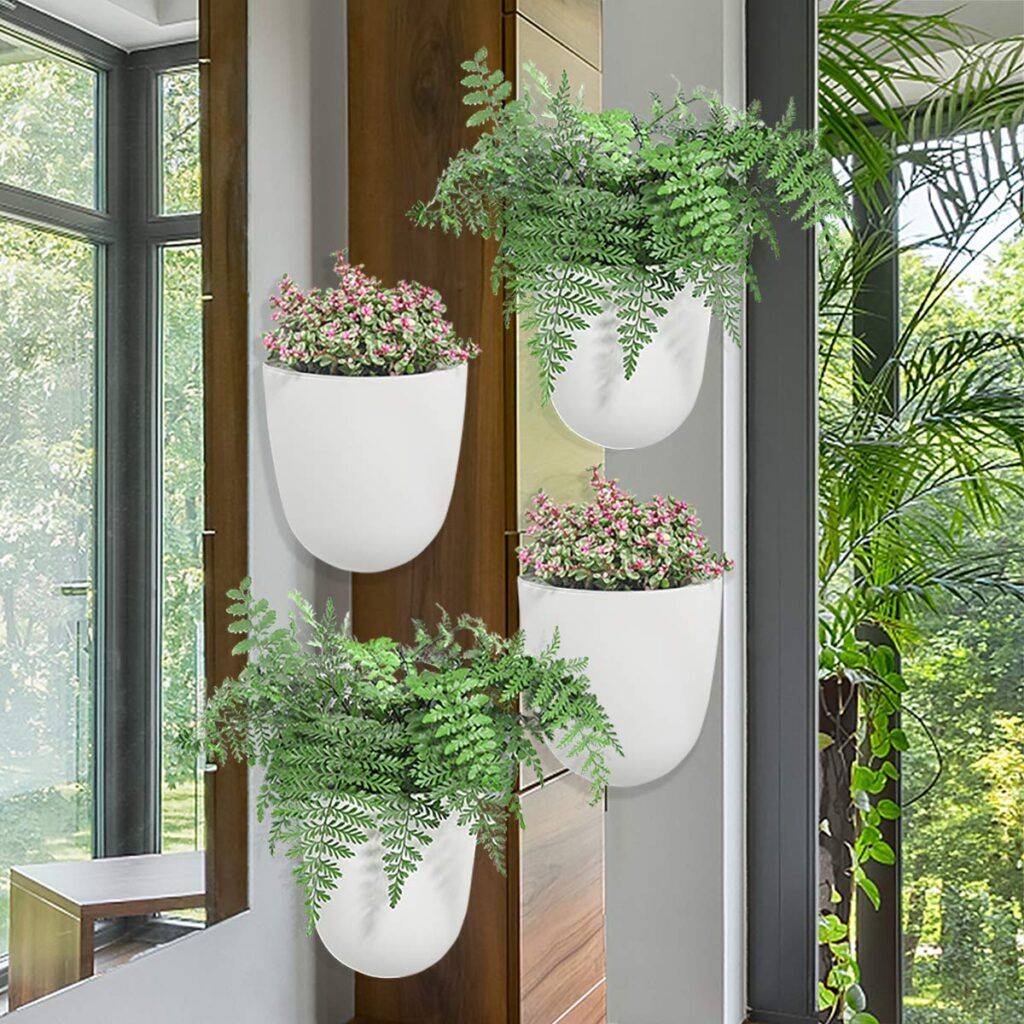
How Self Watering Planters Work
The magic of self watering planters lies in their use of capillary action – the same principle that helps trees draw water from their roots to their leaves. Here’s how the process works:
1. Water Storage
The reservoir at the bottom stores water, creating a constant supply that’s separate from the soil compartment.
2. Capillary Action
A wick or wicking material draws water up from the reservoir through small pores or fibers, similar to how a paper towel absorbs spills.
3. Root Zone Delivery
Water is delivered directly to the root zone where plants need it most, ensuring efficient uptake and minimal waste.
4. Self-Regulation
Plants only take what they need, preventing overwatering while ensuring they never go thirsty.
Benefits & Advantages of Self Watering Planters
Advantages
- Consistent Moisture: Plants get steady water supply without daily attention
- Water Conservation: Reduces water waste by up to 50%
- Perfect for Travel: Keep plants healthy while you’re away
- Prevents Root Rot: Eliminates overwatering issues
- Time-Saving: Water less frequently but more effectively
Considerations
- Initial Cost: Higher upfront investment than regular pots
- Plant Compatibility: Not suitable for all plant types
- Learning Curve: Requires understanding of proper setup
- Maintenance: Periodic cleaning of reservoir needed
Types of Self Watering Planters
Traditional Pots
Classic round or rectangular self watering planters with hidden reservoirs, perfect for indoor plants and herbs.
Best for: Indoor houseplants, herbs
Glass Planters
Elegant glass options that let you see the water level and roots, adding a modern touch to any space.
Best for: Modern decor, propagation
Hanging Systems
Hanging self watering planters that maximize vertical space and create stunning wall displays.
Best for: Balcony, wall gardens
Wall-Mounted
Space-saving wall planters that create living walls and vertical gardens in small spaces.
Best for: Small spaces, vertical gardens
Balcony Planters
Specialized balcony systems designed for outdoor use with weather-resistant materials.
Best for: Outdoor plants, weather exposure
Smart Planters
Modern planters with app connectivity, sensors, and automated systems for tech-savvy gardeners.
Best for: Tech enthusiasts, monitoring
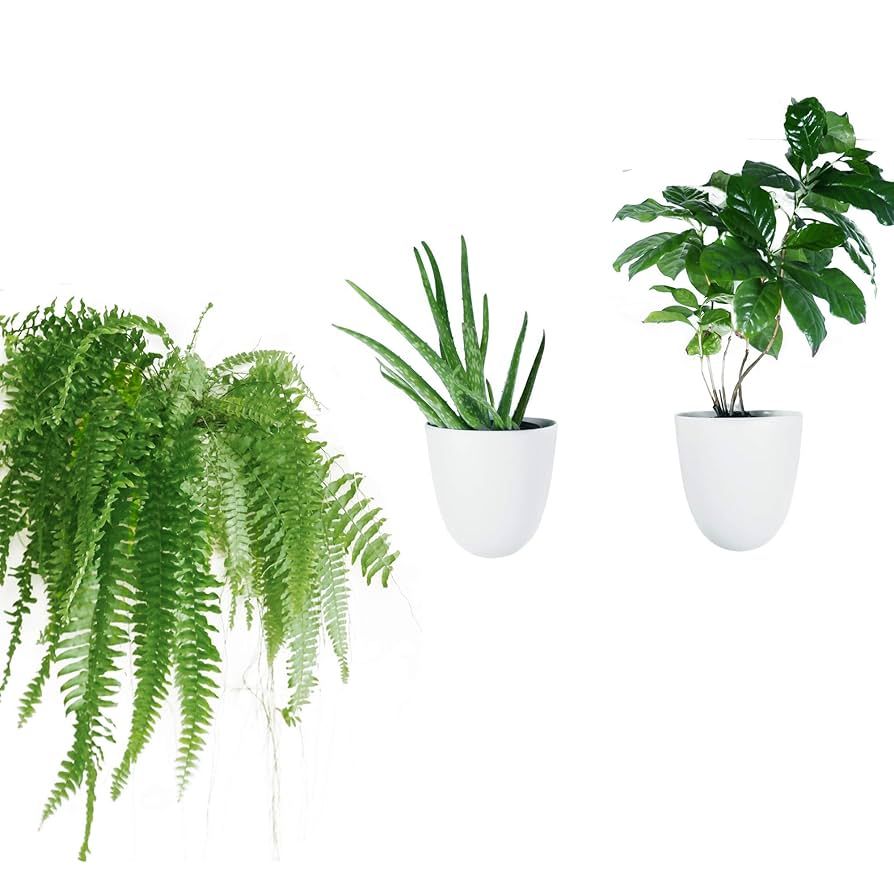
Best Plants for Self Watering Systems
Vegetables
- Tomatoes: Thrive with consistent moisture
- Peppers: Benefit from steady water supply
- Lettuce: Prefers cool, moist conditions
- Spinach: Loves consistent moisture
- Radishes: Quick-growing with steady water
Herbs
- Basil: Loves consistent moisture
- Parsley: Thrives with regular watering
- Cilantro: Prefers steady moisture
- Chives: Easy to grow, benefits from system
Indoor Plants
- Pothos: Adapts well to self-watering
- Philodendron: Loves consistent moisture
- Peace Lily: Thrives with steady water
- Ferns: Especially maidenhair ferns
- Begonias: Benefit from bottom watering
Plants to Avoid
- Cacti and succulents (prefer dry conditions)
- Orchids (need specific moisture cycles)
- Some herbs like rosemary and thyme
- Plants requiring dormancy periods
Complete Setup Guide for Self Watering Planters
What You’ll Need
- Self watering planter
- High-quality potting mix
- Your chosen plants
- Water for reservoir
- Measuring cup
- Gentle fertilizer (optional)
1. Prepare the Planter
Clean your self watering planter thoroughly with mild soap and water. Rinse completely and allow to dry. Check that all components are present and functional.
Pro Tip: For new planters, soak any wicking material for 30 minutes before use to ensure proper water absorption.
2. Fill the Reservoir
Fill the water reservoir according to manufacturer instructions. Most systems can hold 1-3 cups of water. Use room temperature water for best results.
Important: Don’t overfill – leave space for air circulation and expansion.
3. Add Growing Medium
Use a well-draining potting mix that retains moisture without becoming waterlogged. Avoid garden soil, which can be too heavy and may clog the system.
- Fill to about 2/3 capacity initially
- Leave room for root growth
- Gently tap to settle, don’t pack tight
4. Plant Your Selection
Whether you’re growing tomatoes, herbs, or houseplants, plant at the same depth as their original containers. Water lightly from the top initially to help establish the root system.
First Week: Water from the top until roots establish contact with the wicking system.
5. Monitor and Maintain
Check the water level indicator weekly and refill as needed. Most self watering planters need refilling every 1-2 weeks depending on plant size and environmental conditions.
- Check soil moisture at surface
- Look for signs of over or under-watering
- Clean reservoir monthly
Troubleshooting Common Issues
Problem: Plants Are Wilting Despite Full Reservoir
Possible Causes: Clogged wick, air gaps, or root problems
Solutions:
- Check and clean the wicking system
- Ensure proper soil contact with wick
- Water from top initially to prime the system
- Verify soil isn’t too compacted
Problem: Fungus Gnats or Root Rot
Possible Causes: Too much moisture, poor drainage, or stagnant water
Solutions:
- Empty and clean reservoir thoroughly
- Improve air circulation around plants
- Use well-draining potting mix
- Add perlite or vermiculite to soil
Problem: Water Drains Too Quickly
Possible Causes: Drainage hole issues or soil problems
Solutions:
- Check for proper drainage plug installation
- Ensure soil mix retains adequate moisture
- Verify reservoir isn’t cracked
- Adjust soil composition if needed
Problem: Poor Plant Growth
Possible Causes: Nutrient deficiency, wrong plant choice, or environmental factors
Solutions:
- Add liquid fertilizer to reservoir (diluted)
- Ensure adequate light conditions
- Verify plant is suitable for self-watering
- Check temperature and humidity levels
2025 Trends & Innovations in Self Watering Planters
Smart Technology Integration
Modern self watering planters now feature app connectivity, allowing you to monitor water levels, soil moisture, and plant health from your smartphone.
- Automated refill notifications
- Growth tracking and analytics
- Integration with smart home systems
Sustainable Materials
2025 brings eco-friendly options made from recycled plastics, bamboo fibers, and biodegradable composites for environmentally conscious gardeners.
- Recycled ocean plastic planters
- Bamboo fiber composites
- Biodegradable options
Vertical Growing Systems
Wall and hanging systems are becoming more sophisticated, with modular designs perfect for urban balcony gardening.
- Modular wall systems
- Stackable designs
- Integrated grow lights
Designer Aesthetics
Glass and ceramic options with minimalist designs are trending, offering both function and style for modern homes.
- Minimalist glass designs
- Ceramic and stone finishes
- Color-coordinated systems
Market Predictions for 2025
65%
Growth in smart planter adoption
40%
Increase in vertical systems
80%
Preference for eco-friendly materials
Frequently Asked Questions
Do self watering planters actually work?
Yes, self watering planters are highly effective for most plants. They work by using capillary action to deliver water directly to plant roots as needed. Studies show they can reduce watering frequency by up to 75% while maintaining healthier plant growth. They’re particularly effective for vegetables, herbs, and most houseplants that prefer consistent moisture.
How often do I need to refill the water reservoir?
Most self watering planters need refilling every 1-2 weeks, depending on plant size, environmental conditions, and reservoir capacity. Larger plants and warmer conditions require more frequent refills. Always check the water level indicator and refill when it shows low rather than waiting for it to empty completely.
Can I use self watering planters for tomatoes and vegetables?
Absolutely! Tomatoes and many vegetables thrive in self watering systems. Tomatoes especially benefit from consistent moisture, which prevents blossom end rot and cracking. Other vegetables like peppers, lettuce, and spinach also perform excellently in these systems. Just ensure you choose planters large enough for root development.
Are glass self watering planters better than plastic ones?
Glass planters offer several advantages including better visibility of water levels and root development, no chemical leaching, and attractive aesthetics. However, plastic planters are more durable, lightweight, and often more affordable. Glass is excellent for indoor use and propagation, while plastic is better for outdoor and balcony applications.
What plants should I avoid in self watering planters?
Avoid plants that prefer dry conditions like cacti, succulents, and some Mediterranean herbs like rosemary and thyme. These plants are adapted to drought conditions and can suffer from root rot in consistently moist environments. Also avoid plants that need specific wet-dry cycles for flowering or dormancy.
How do I prevent algae growth in the water reservoir?
Prevent algae by keeping the reservoir covered and away from direct sunlight. Use opaque containers when possible, and clean the reservoir monthly with a mild bleach solution. You can also add a small amount of hydrogen peroxide to the water (1 teaspoon per gallon) to prevent algae growth without harming plants.
Can I use hanging self watering planters on walls?
Yes, hanging and wall-mounted self watering planters are excellent for vertical gardening. They’re perfect for small spaces, balconies, and creating living walls. Just ensure proper mounting hardware is used as these planters become heavier when filled with water and soil. Check weight ratings and use appropriate anchors for your wall type.
Start Your Self Watering Journey Today
Self watering planters represent the future of hassle-free gardening, whether you’re growing fresh herbs on your kitchen windowsill, nurturing tomatoes on your balcony, or creating a stunning wall garden with hanging systems. From elegant glass designs to modern smart planters, there’s a perfect solution for every gardener.
As we move through 2025, these innovative systems continue to evolve with smart technology, sustainable materials, and stylish designs that complement any living space. By choosing the right self watering planter and following proper setup procedures, you’ll enjoy healthier plants with less effort and water waste.
Ready to Get Started?
Remember: Start with easy plants like herbs or leafy greens, choose a planter appropriate for your space, and don’t be afraid to experiment. The beauty of self watering systems is that they make gardening more forgiving and enjoyable for everyone.
